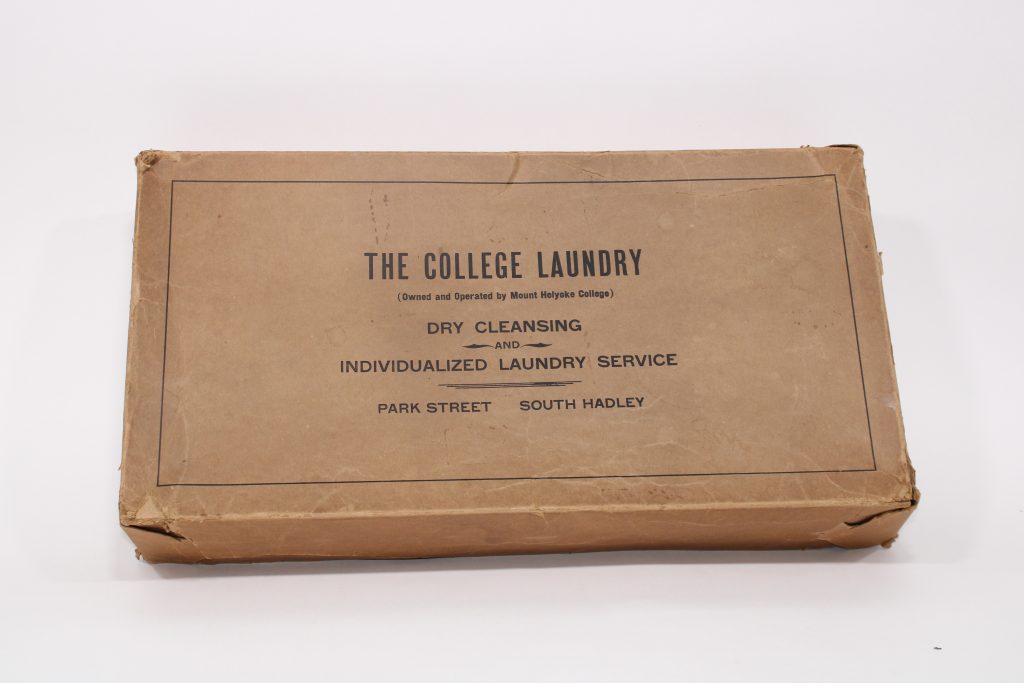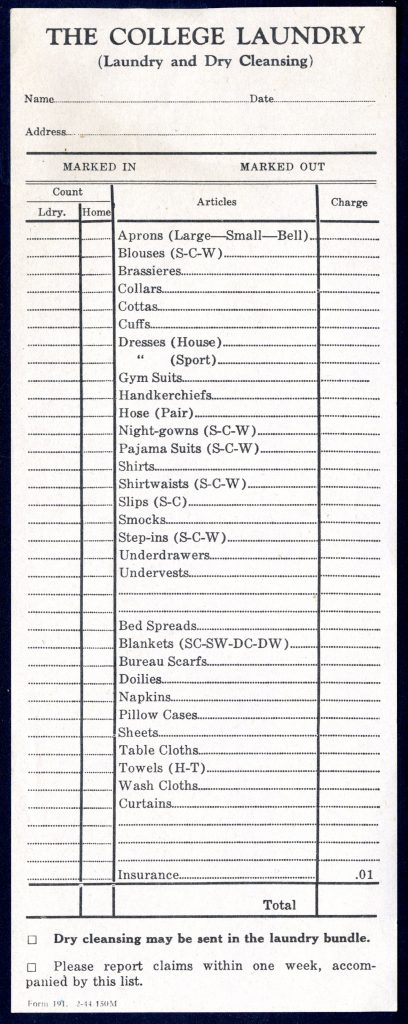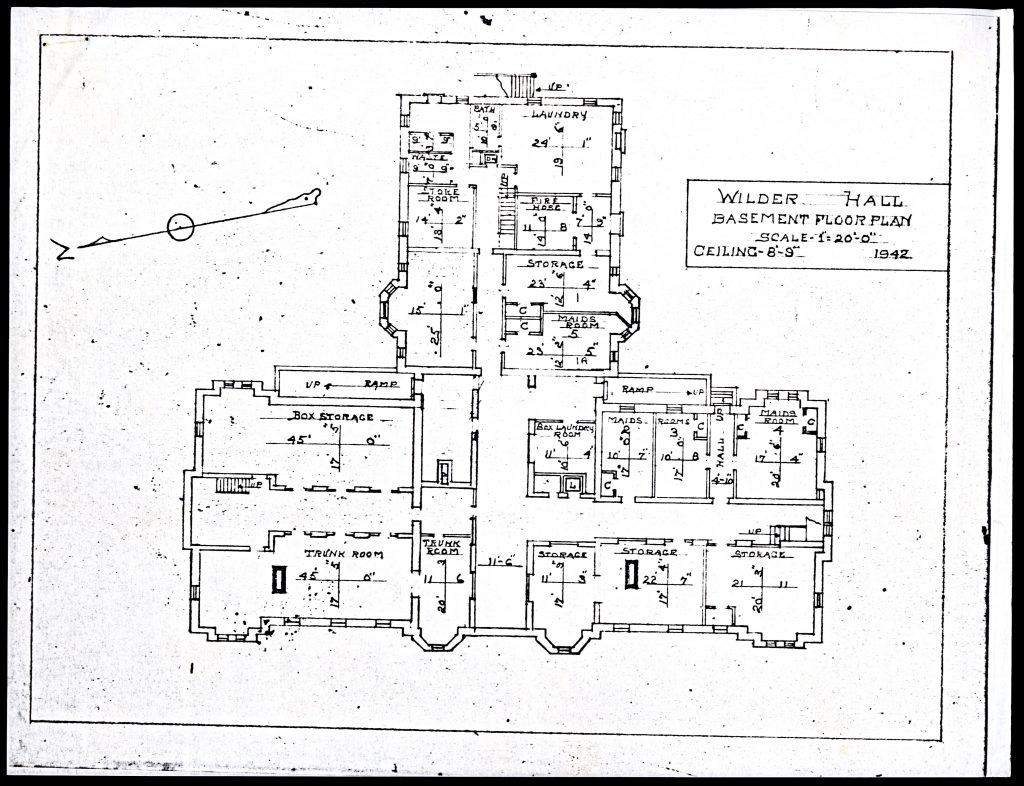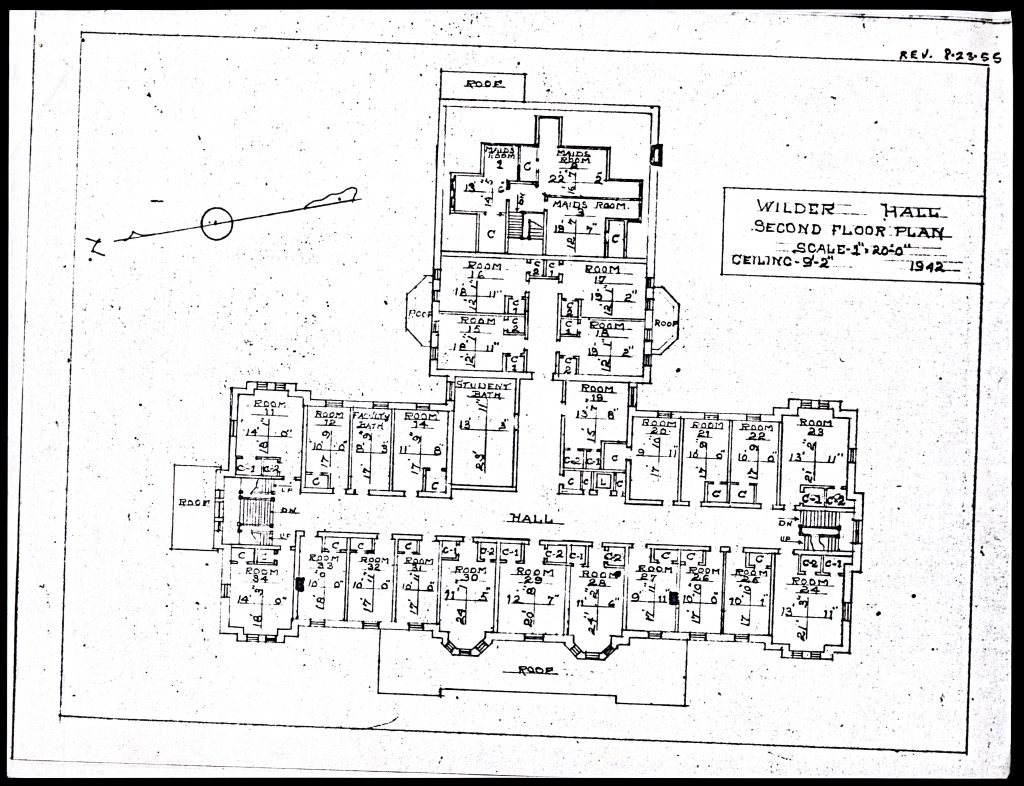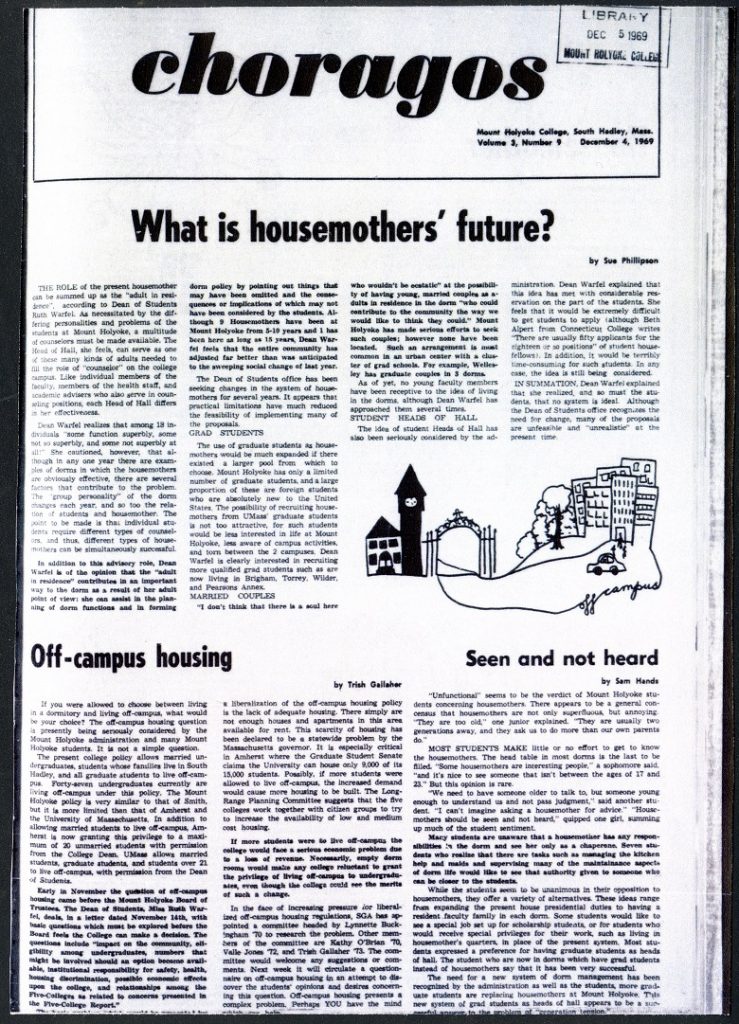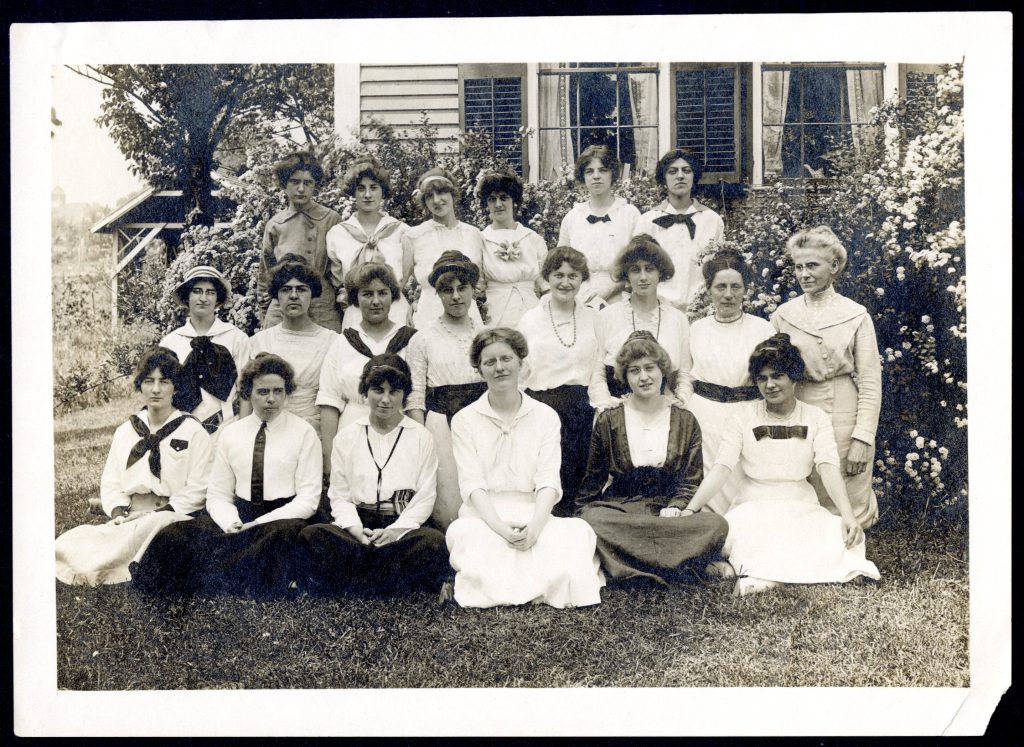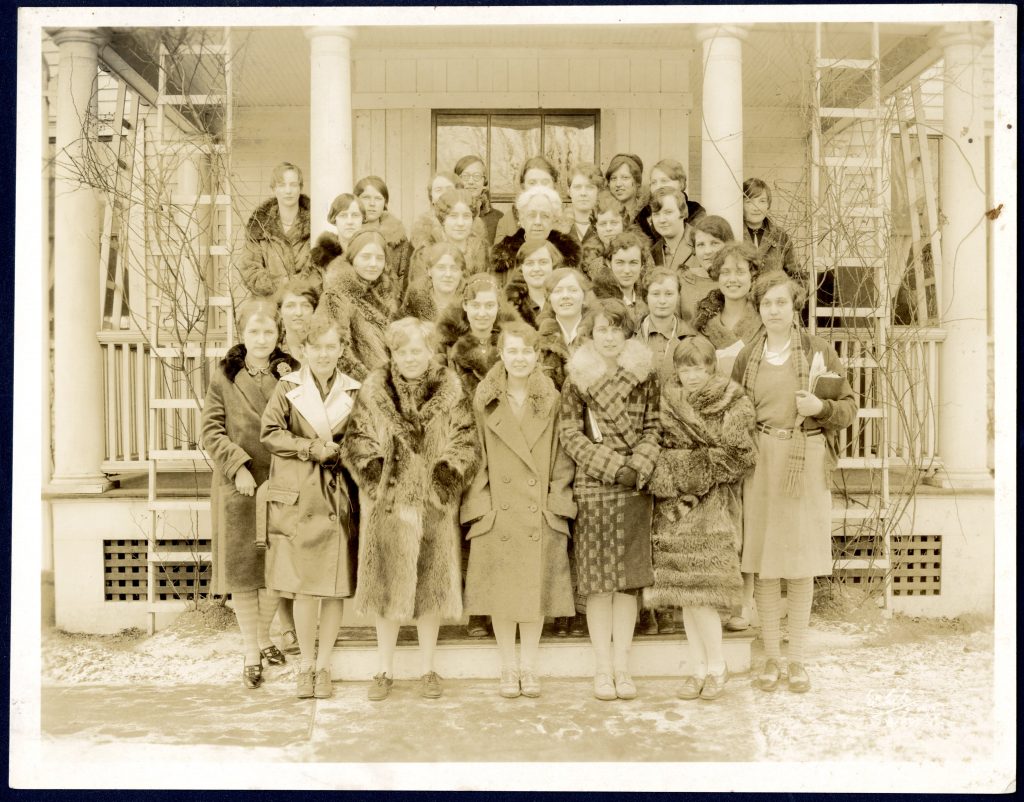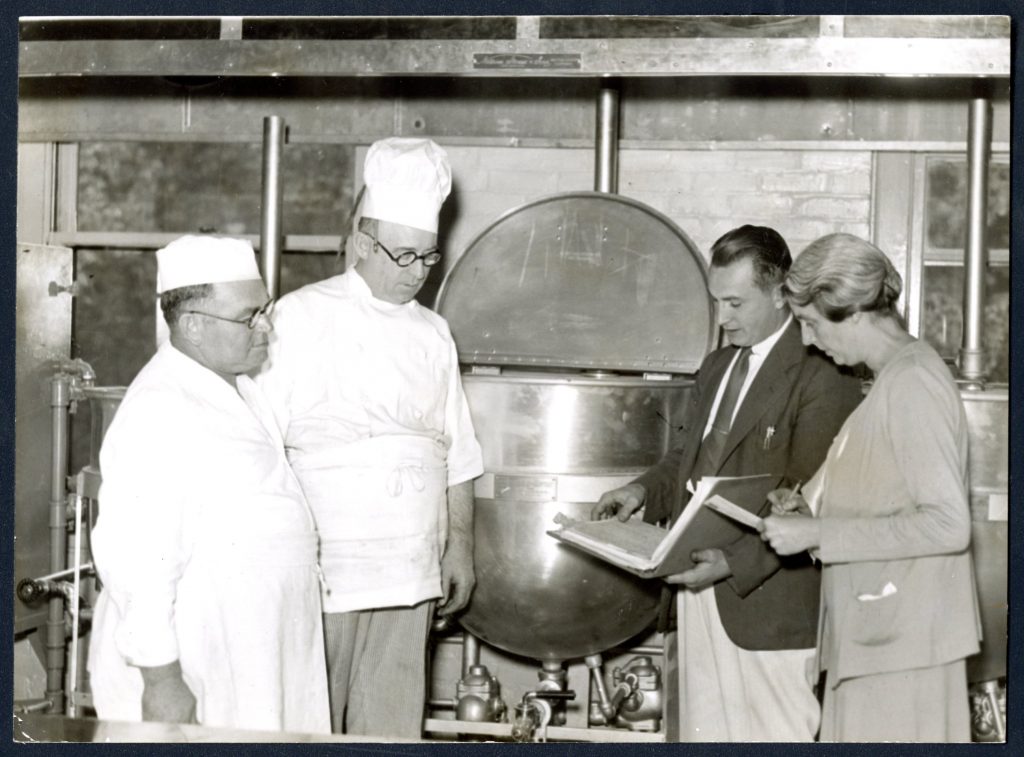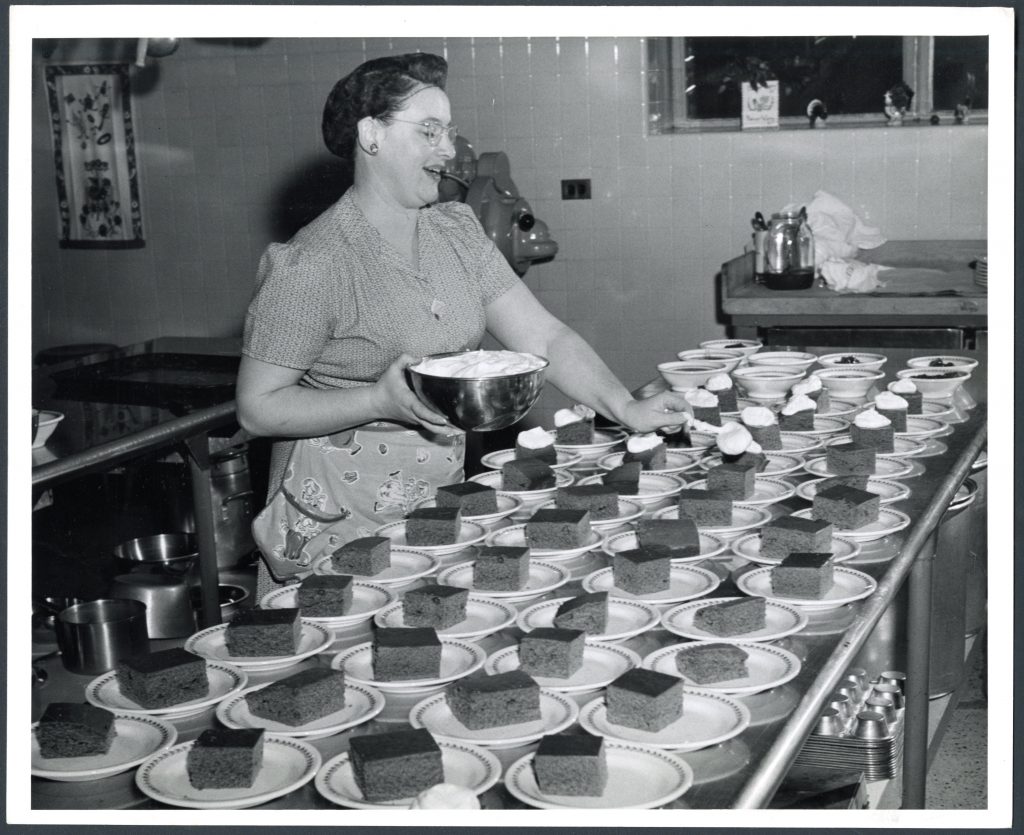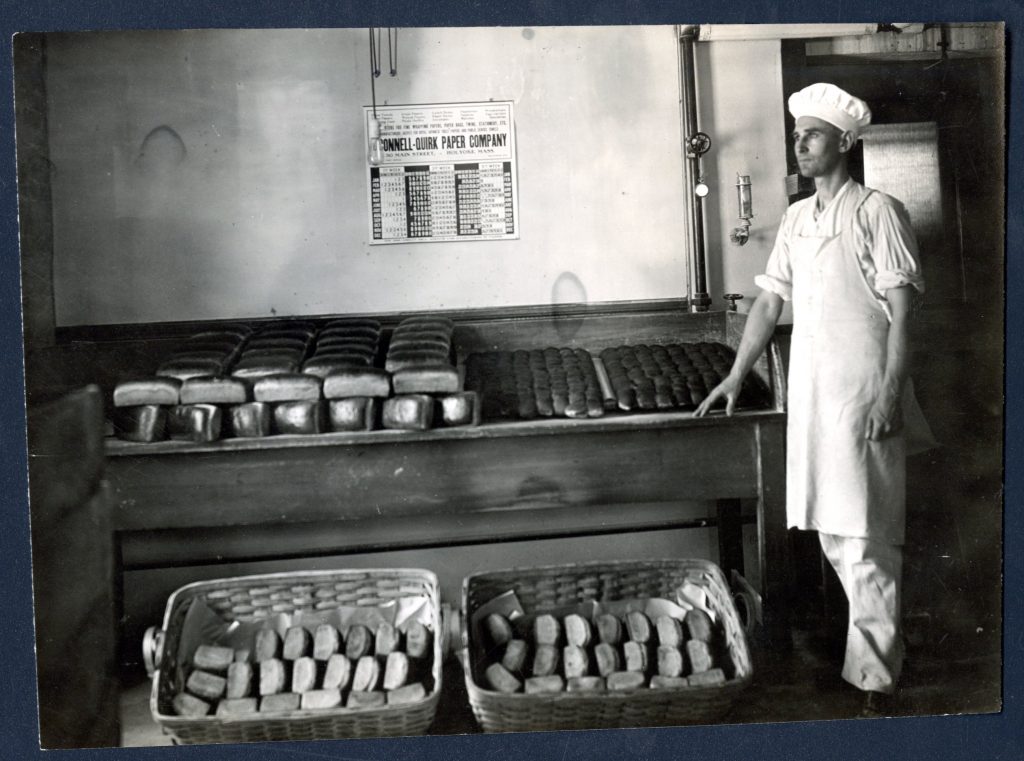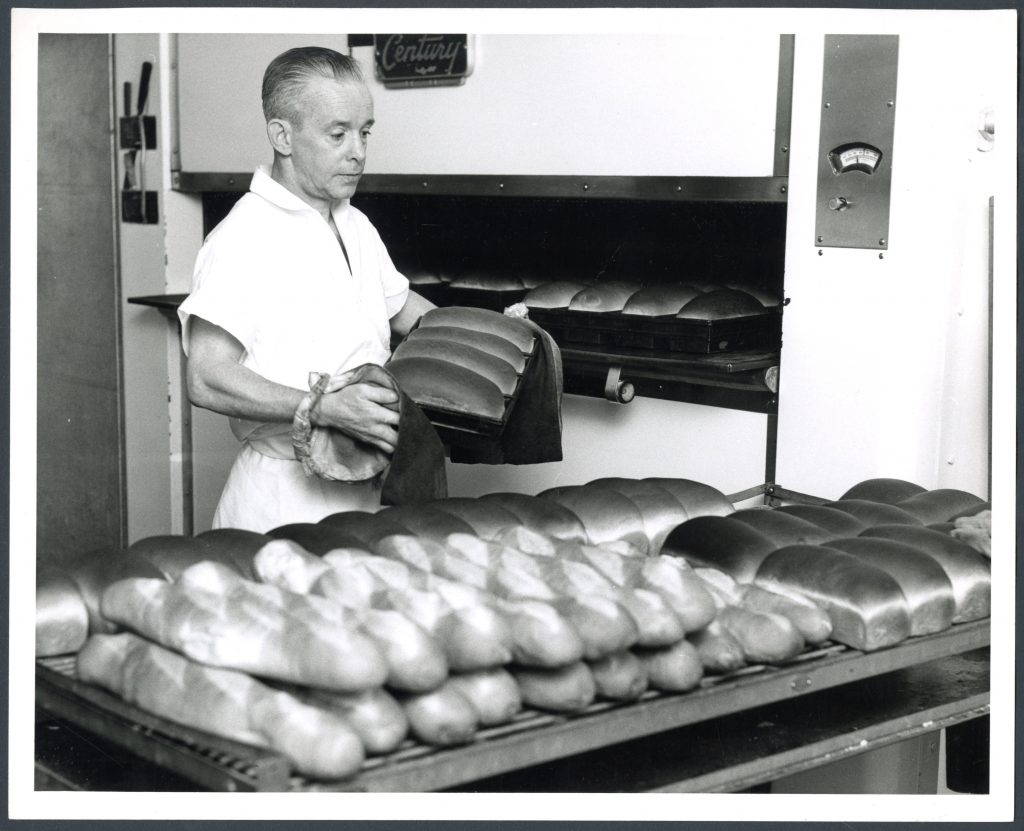Laundry
Through the early 1900s, students did laundry themselves or sent it to a company in Holyoke. The College opened its own laundry facilities where Torrey Hall presently is in 1908. It began with six employees. Students could send their laundry once a week in a box as shown below, which was owned by Lydia Wright, Class of 1946. By 1925, the operation had grown considerably. Headed by Mr. L. S. Smith, the laundry employed over 30 workers and over 1,000 boxes of laundry were being done a week. The laundry closed in 1949 and students started sending their items off campus. Although many hand washed their clothes, student handbooks during this time suggested sending laundry home or to a laundry service. Laundry didn’t resume on campus until the early 1960s when machines were installed in dorms.
Maids
In 1874, the Board of Trustees voted to hire servants in order to spare the “young ladies” from the bulk of the “severe and coarse domestic labor” required to keep the Seminary running. These were the first recorded servants on campus.
In 1896 a woman was hired to wash dishes. Maids gradually took up much of the work once done by students, and this only increased after domestic work for students was abolished in 1913.
While we currently depend on the work that housekeepers, maintenance, dining staff, and many others provide, the number of those workers has gone down steadily even as the College has grown. In 1920, there were around 11 maids working in each of the larger dorms, and five in the smaller ones. When Mandelle Hall was built in 1922 it had 15 maids working and living there. When Prospect Hall was built in 1959, there were eight maids living there. In 1971, there were around 40 maids working for Mount Holyoke. There were 23 housekeepers in 2006.
*Caption for maid uniform once photographed – Maid uniform of Stephanie Ochedowski, circa 1930s
Housemothers
Another key figure in the domestic life of the College was the housemother. These women lived in the dorms with the students and ran the house. They ensured students were following the rules and acted as a motherly figure. But, by the late 1960s, students were yearning for more freedom and responsibility over themselves and talks of phasing out the role of housemothers began.
The work previously done by housemothers was taken over by head residents, often young faculty couples, graduate students, and recent graduates who were employed as staff of the Dean of Students. They were assisted by student hall presidents and a volunteer student advisor on each floor. This system continued until 1999 when it was replaced by four full-time, live-in professional staff serving dorms grouped by location. They are aided by student Residential Advisors on each floor. This same system is in place today.
Dining Services
Throughout the history of the College, there have been many components that go into feeding hundreds of students multiple times a day. For examples, in the early 1900s the College had a butcher, a baker, several cooks, and even a milk pasteurization plant.
